Llanishen: Parasite stops swimming in newly opened reservoir
- Published
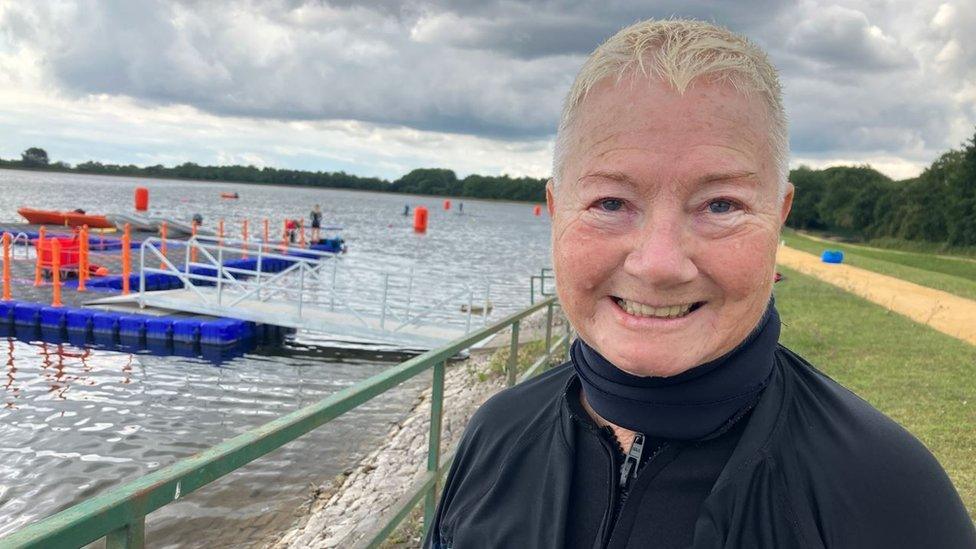
Suzanne Doran from Taffy Dippers was able to get a swim in before the reservoir closed
A potential parasite in a reservoir has prevented it from fully re-opening to the public after a 23-year wait.
Swimming and paddle board sessions have been postponed at Llanishen Reservoir due to an unconfirmed case of cercarial dermatitis, external - also known as swimmer's itch.
Campaigners fought for two decades to save the Cardiff reservoir after it was drained to build hundreds of new homes.
Welsh Water said it was working as fast as it could to allow full access.
It also said regular monitoring had shown the water quality was excellent.
An unconfirmed case of an illness linked to a parasite is being investigated after a group of swimmers were given access to the water ahead of its official opening on Friday.
Swimmer's itch is a skin rash caused by an allergic reaction to parasites released by infected snails.

Vicky Martin says open water swimming has been paused while they take more advice on the issue
Head of visitor attraction at Welsh Water, Vicky Martin, said: "As a precautionary measure, we have paused open water swimming while we take further advice on the location of the open water swimming course, which is currently in shallow water where the risk of swimmers' itch - which is quite common in open water - is higher."
Sailing, canoeing and kayaking are still permitted and visitors will be able to take walks around the reservoir and use the cafe.
Wales' most successful female Olympian, Hannah Mills, described the re-opening of the reservoir for public use as "hugely significant" and "brilliant" for the area, but said that access to clean water for people to enjoy was key.
As a young member of the former local sailing club, Ms Mills said she was "really sad" when it was closed following a planning application to build houses on the site.
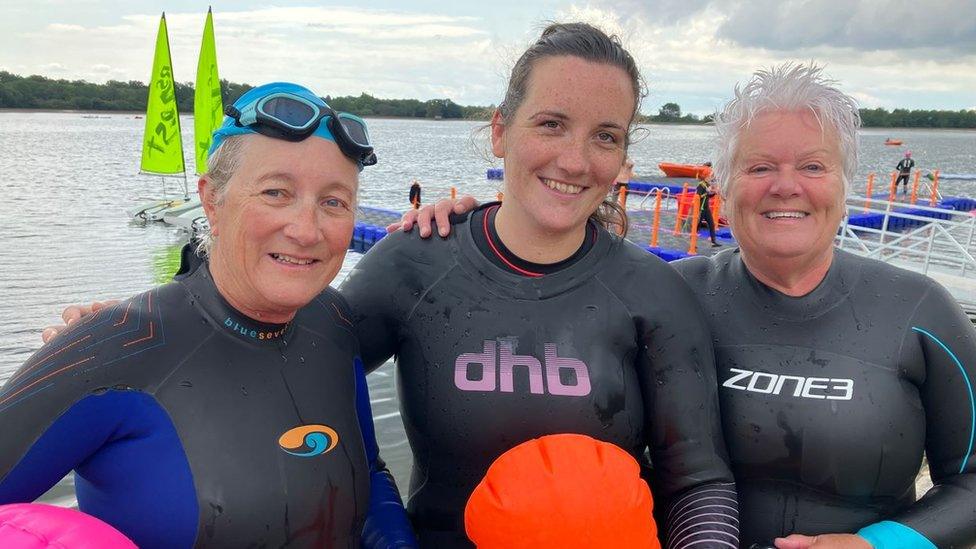
Swimmers will have to wait a little longer before taking another dip in the reservoir
More than 600 people attended the first meeting of people opposed to plans by the site's former owners, Western Power Distribution (WPD) to drain the reservoir and build 324 houses in 2001.
The process to drain it began in 2010, but three years later a planning application by WPD was called in by Welsh government officials.
An appeal by the American-owned firm was rejected in 2013 and the site was sold.

Richard Cowie says it was "difficult" to fight the company wanting to develop the reservoir
Chairman of the Reservoirs Action Group, Richard Cowie, said: "It was very difficult over 22 years and if I had a pound for every time someone told me we didn't have a chance of winning against an American owned company, I'd be rich now.
"Sometimes it went against us and sometimes it went in our favour, but in the end we persevered and we finally got there."
Celsa Manufacturing UK bought the site as it wanted to transport water from the reservoir to its Tremorfa steel works.
The change of use was described by local campaigners at the time as "a new era".
In 2016, Welsh Water acquired and began work to re-fill Llanishen reservoir to restore it for public use and to encourage wildlife to flourish.
However, dog walkers will not be able to go beyond the car park and cafe as the area has been designated as a Site of Special Scientific Interest, external due to a rare mushroom which has been found.
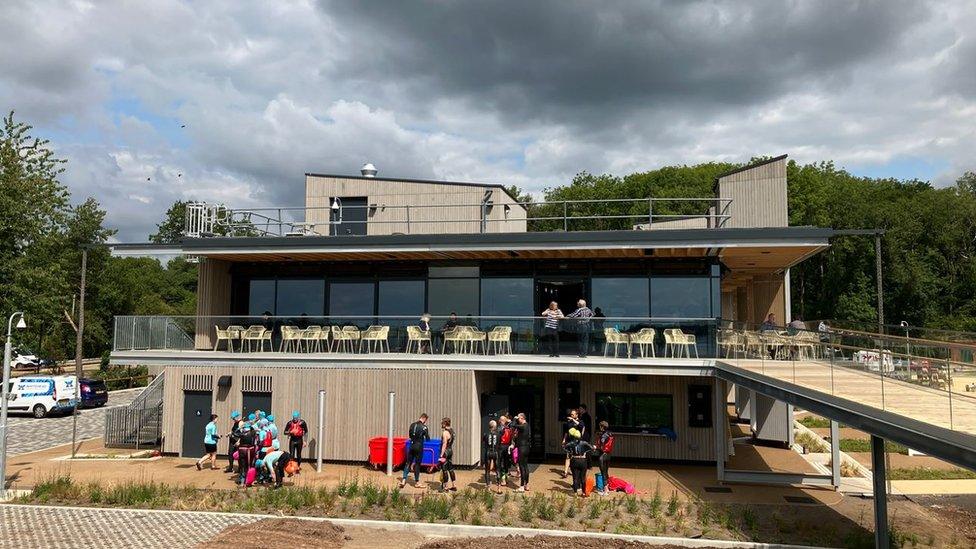
The reservoir now has a cafe, changing rooms and a visitor centre
Wax-cap fungi and a variety of birds which reside there during the winter are the reasons for the reservoirs' protected status.
Ms Martin said: "The advice we had from Natural Resources Wales was that allowing dogs to come on to the site would damage the soil which would make it very hard for the fungi to survive so we've had to restrict access."
Welsh Water also wants to limit the number of people visiting the reservoirs by car and encourage greener options, so Ms Martin said the organisation had "tried to make it as easy as possible to get here by foot and by bike".
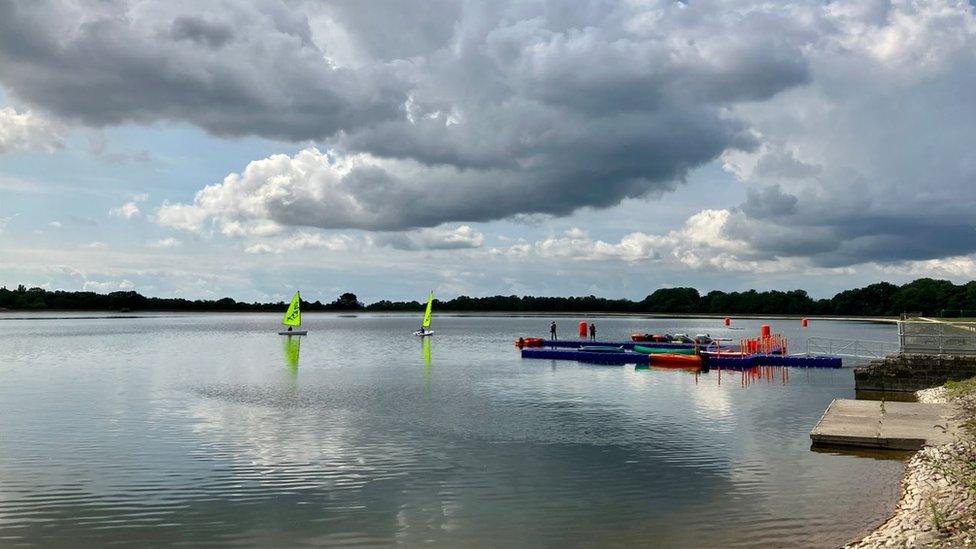
There were plans to build houses on the reservoir
Member of the Senedd for Cardiff North, Julie Morgan, said: "After a long and united community effort for the last 20 plus years, it is fantastic that Llanishen and Lisvane reservoirs are back in operation.
"I'm so pleased that the community have been successful, and I'm looking forward to seeing the reservoirs become a thriving community space."
- Published28 January 2023

- Published1 January 2023
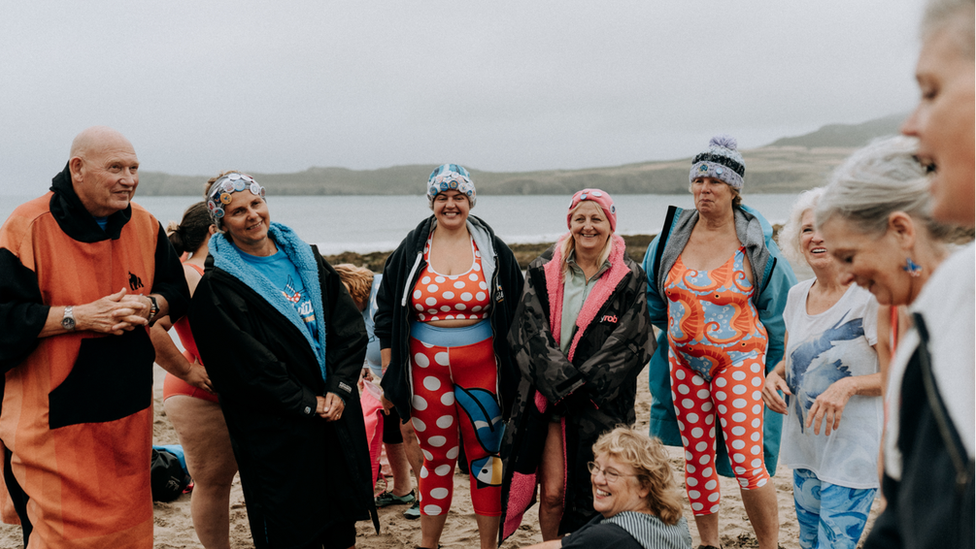
- Attribution
- Published14 December 2021
